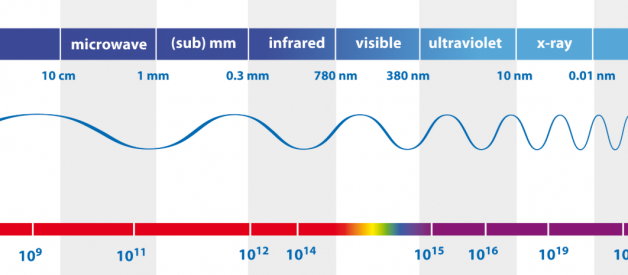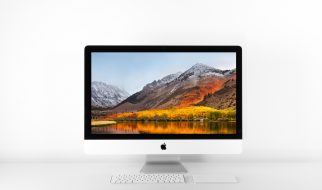By the end of 2019 over 83% of Americans will own an internet connected smartphone. While there aren?t any official numbers, it?s safe to say that only a fraction of those smartphone owners actually know how their device works. It?s hard to describe how you?re connected to the internet, or why you?re able to hold a conversation on your cell phone while you?re walking around. This is all for good reason. It?s insanely complicated.
However, with some baseline knowledge you can demystify the invisible workings on your device. This is not only helpful for a quip at a dinner party. Understanding the infrastructure phones depend on will allow you to comprehend the FCC?s role in American society, technological barriers we?ll need to overcome to fulfill our insatiable lust for data consumption and better understand where the next billion dollar telecommunications company may come from (or not).
To investigate ?how a smartphone works? you can segment based on the mechanism your phone uses to do all the things we?ve come to expect e.g make calls, download apps and browse the internet. The scope of the mechanisms covered here are:
- Cellular data usage
- WiFi data usage
- Emerging technologies (5G + CBRS)
The backbone of public infrastructure: Cellular Data
There are two main elements that enable cellular data to work on devices: Spectrum and Hardware.
- Spectrum
When the word spectrum is used in a telecommunications context the meaning refers to the electromagnetic spectrum ? which is shortened to spectrum. The electromagnetic spectrum has some properties that make it uniquely useful for transmitting ?things?.
The best way to think of the spectrum is as a big wave, where each section has a different wavelength and frequency property. These two properties are always inverse to one another i.e. large wavelength small frequency, large frequency small wavelength. Depending where you are on the wave spectrum you can transmit different types of data. As a rule of thumb, a low frequency, high wavelength property (far left of the spectrum) is great for sending small amounts of data very far (i.e. low bandwidth). A high frequency, low wavelength property can send lots of data much shorter distances (high bandwidth). You can see the spectrum below:
 The Electromagnetic Spectrum. Source: The Stanford Solar Center, 1997
The Electromagnetic Spectrum. Source: The Stanford Solar Center, 1997
Many familiar items we operate everyday utilize a different part of the electromagnetic spectrum: (tip: we can?t see radio waves because they?re outside of the ?visible light? spectrum. For most of human history we thought that the visible light spectrum was the only part that existed. Shout out to James Maxwell, Scottish scientist who revolutionized our thinking about this).

We can look to FM radios for a simple example. When you tune your radio to 100.7 FM, you?re actually tuning to the radio wave portion of the electromagnetic-spectrum at 100.7 Mega-Hertz (Mz).
But in our radio example, what would happen if another DJ wanted to play songs at the same frequency? There would be problems. If two DJ?s were both transmitting song data to 100.7 Mega-Hertz (Mz) the waves would hit each other and cancel out. It?s a fairly annoying property of waves called interference. Interference is one of the biggest problems in the telecommunications industry today.
To solve for this the US government took over, specifically the FCC. They created a system where the government would own (feels weird that the government can own electromagnetic spectrum, but I suppose the US is powerful) all of the ?radio wave? spectrum and they would chop it up into bands or ?stations?. Now if you wanted to play country music on 100.7 FM (Mega-Hertz Mz) then you would license that frequency from the FCC and no one else would be able to broadcast at your frequency. This largely solved the interference problem for radio stations.

The cellular data market is vastly more valuable than the radio distribution and advertising market, making the stakes for cellular spectrum much higher.
Now imagine you double clicked into that box of spectrum that the FCC owned which is depicted above. You?d get something like this:
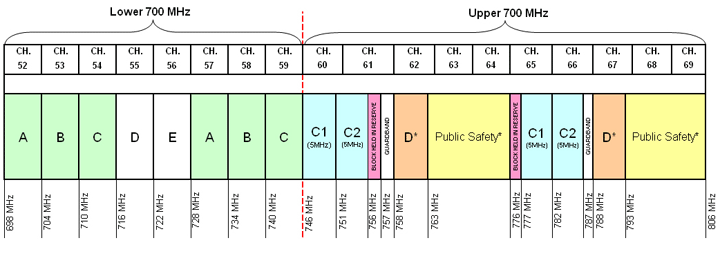 There are entire blocks for ?Public Safety?. This is why a 911 call will always work, even when you don?t have service. It ensures the channel is open and there will never be interference. Source: FCC.
There are entire blocks for ?Public Safety?. This is why a 911 call will always work, even when you don?t have service. It ensures the channel is open and there will never be interference. Source: FCC.
Each one of those ?bands? of spectrum is auctioned off to the highest bidder by the FCC. Since 1994 the FCC has collected over $60 Billion Dollars licensing spectrum. To understand why this matters we need to take a quick detour back to 2002.
Quick Detour:
Remember the Verizon, ?can you hear me now? guy? ?
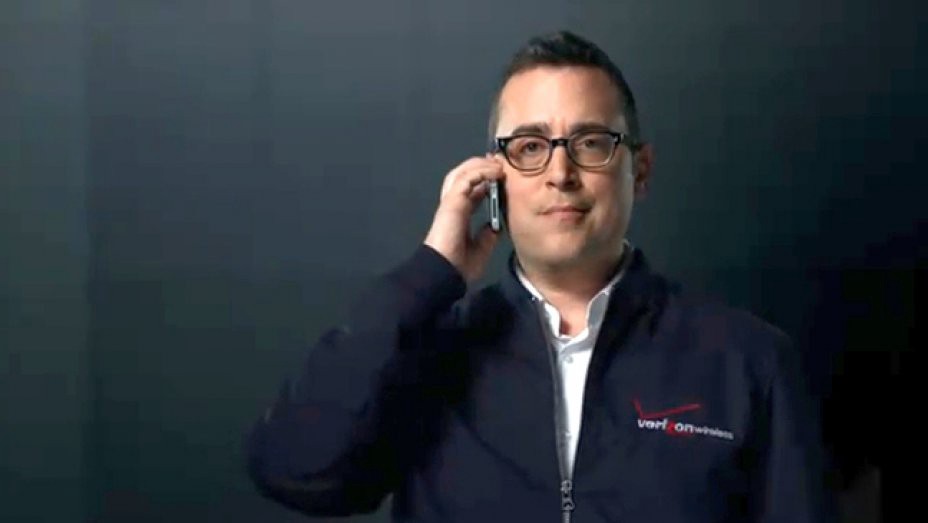 Source: The Hollywood Reporter
Source: The Hollywood Reporter
Who turned into the Sprint, ?lemme tell ya about our new network? guy:
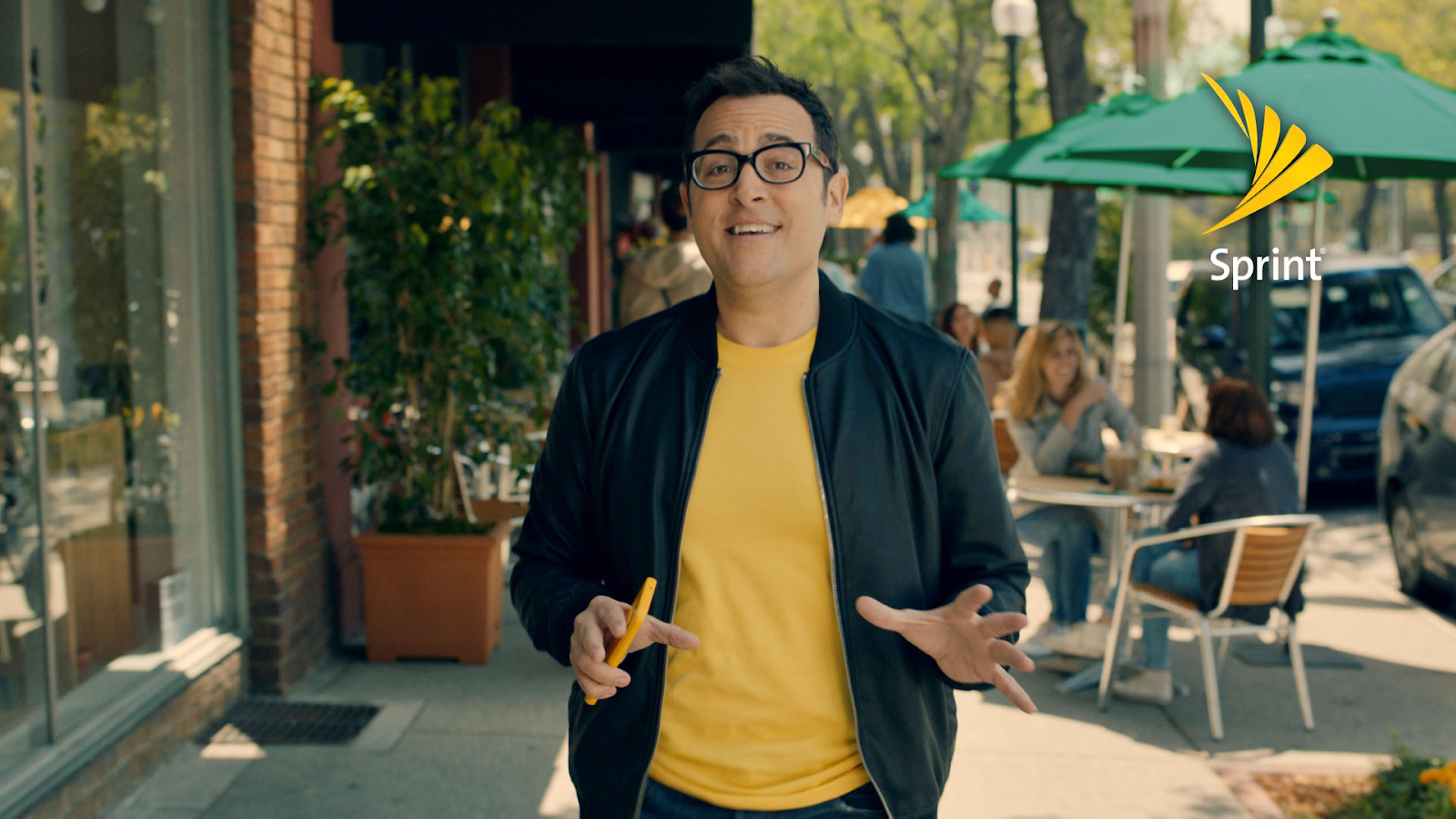 Source: Sprint YouTube, 2019
Source: Sprint YouTube, 2019
There?s a good reason this man was the spokesperson for these two companies. These are two of the largest Mobile Network Operators (MNO) in the United States. As a matter of fact, following the TMobile & Sprint merger, there are only four MNO?s total in the United States?. Basically ?his options were quite limited. The same is true with American consumers looking for a cellular data phone plan.
You may be thinking: well there?s more than just three options. There are providers like Google Fi, Cricket Wireless, Boost Mobile and more. Those companies are not MNO?s. They?re Mobile Virtual Network Operators (MVNO?s). This is a critical distinction.
The main difference between an MNO and MVNO is that the former can buy ?Spectrum? from the United States Government and the latter cannot. Effectively, this means that MNO?s can buy up all the spectrum from the US government then resell it at whatever price they want to the MVNO?s. This solidifies Sprint/TMobile and Verizon as oligopolies in the Mobile Phone Industry.
As a society we?ve become inseparable from our mobile phones (Americans check their phones 52?80 times / day on average?). Most people are shocked to find that the FCC + Sprint/T Mobile and Verizon control the entire electromagnetic spectrum that govern our usage of these nifty devices. Pretty crazy.
Okay we?re back
The scarcity and importance of the electromagnetic spectrum is why Sprint, Verizon and TMobile shell out Billions upon Billions of dollars a year to license spectrum.
The spectrum is the mechanism used to send data. But the data still needs to come from somewhere (transmit) and go somewhere (receiver) for it to be useful.
If the telecommunications industry were a game of pong, the ball would be the electromagnetic spectrum and each paddle would be hardware. One paddle is a users device and the other paddle a piece of industrial telecommunications equipment i.e. cell tower.
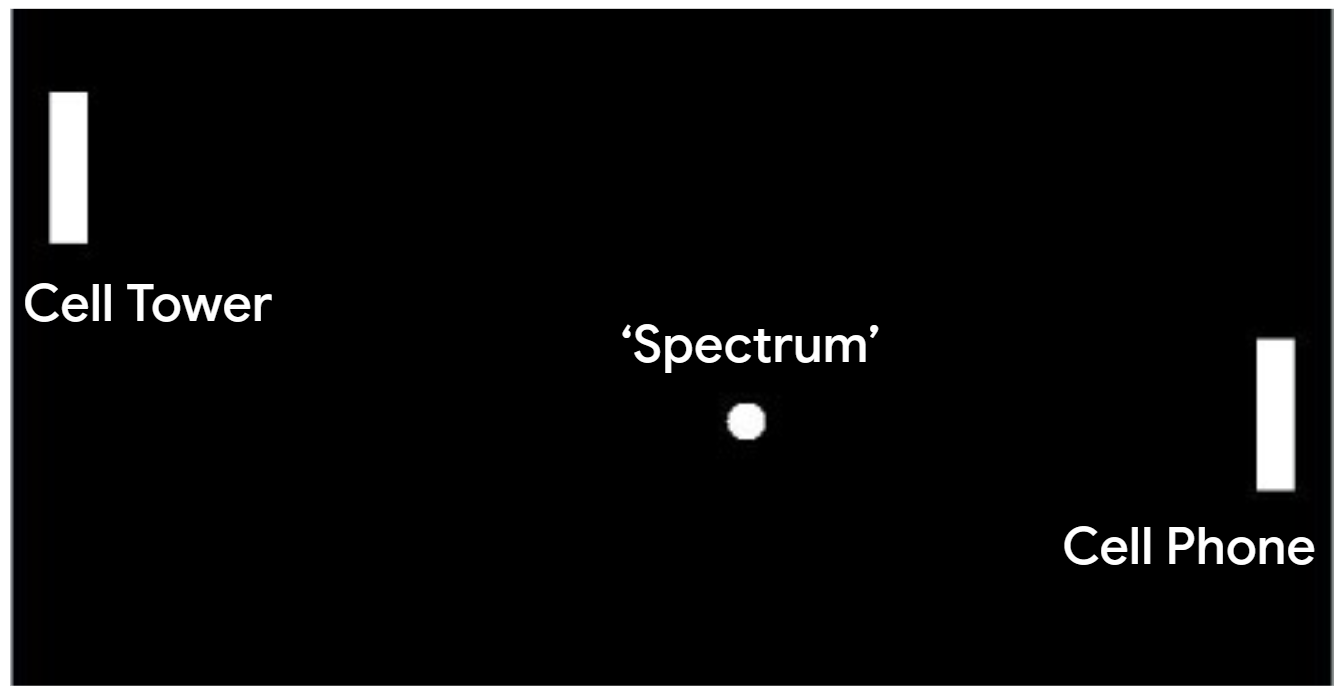
Now we?ll take a look in depth at how the hardware holds up it?s end of the bargain.
2. Hardware
In the pong analogy, there were two paddles, or pieces of hardware. Your cell phone and the cell tower?. We?ll start by looking into your cell phone.
Your Cell Phone
At its core, your cell phone is a device for two way communication. When you?re communicating with a friend over a call the following occurs:
- Your voice is converted into an electrical signal. Sound has an audio frequency and wavelength. Your device takes that audio frequency and matches it to the frequency on the electromagnetic spectrum.
- Then that encoded frequency can be transmitted from point A to a cell tower via the electromagnetic spectrum.
- Cell tower receives the signal, then sends the signal out to point B over the electromagnetic spectrum again.
- You Friends cell phone converts (decodes) that signal back into audio? with their receiver.
This sounds like a long and drawn out process, however the reason this process can happen so quickly is because these waves are traveling at the speed of light (186,282 miles per second). So while there?s a lot happening technically, the result feels seamless to an end user.
Now if you switch from a voice call to say, downloading angry birds the process is largely the same, the request just gets routed to a different place, a company?s server.
To enable all of this your cell phone needs two things:
- A transmitter (send waves)
- A receiver (accepts waves)
Both of these materialize themselves in the form of antennas. Now that smartphones have gotten ?well?smarter, you can see that we?ve packed use case specific antennas into newer model phones:
 Source: IEEE Spectrum, 2018
Source: IEEE Spectrum, 2018
The cell phone is good at its job; sending and receiving signals at light speeds. But all would be for not if there weren?t massive towers that could receive the signal, make sense of it and send it back out.
Cell towers and other infrastructure
There are three main components to the infrastructure that allows your phone to work:
- Macro cell. These are the monster towers you?ve likely seen around your neighborhood. Think of these as the centerpiece to mobile infrastructure.
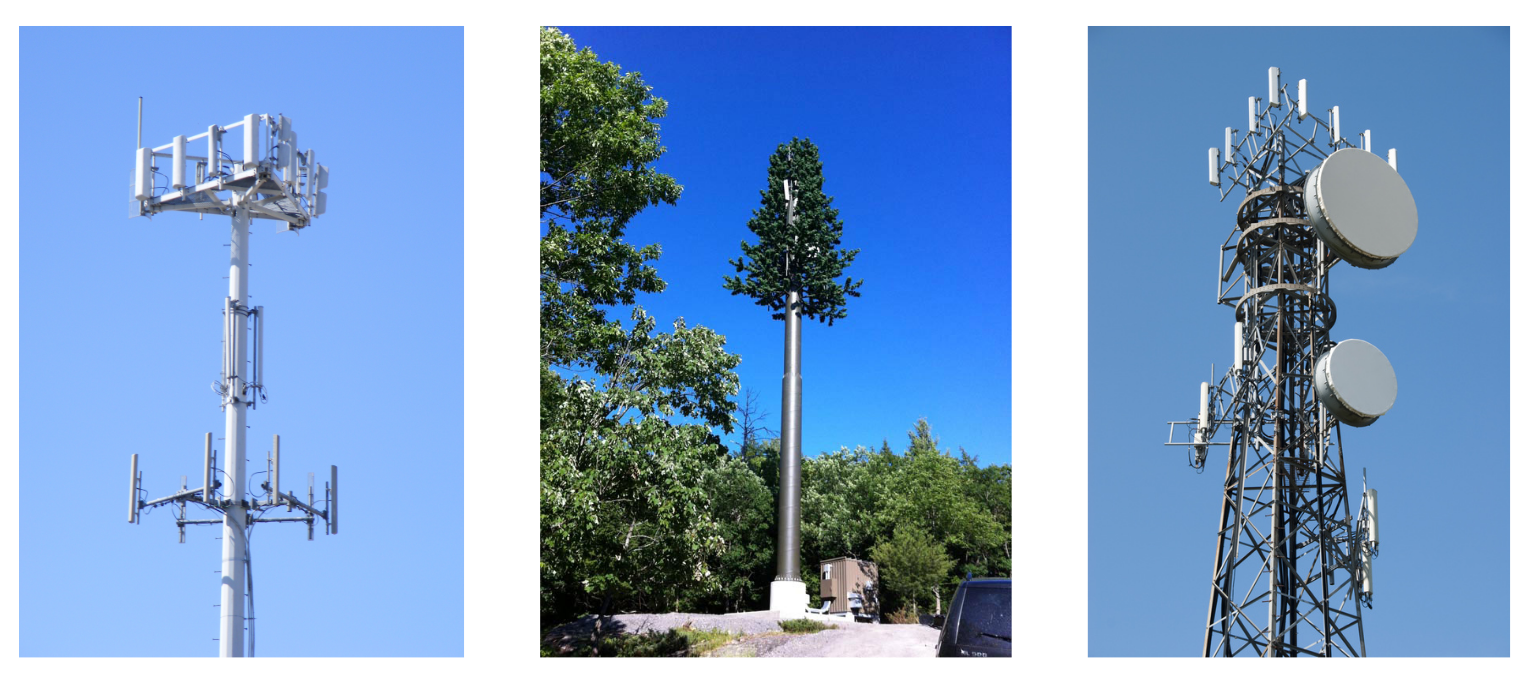 Source: Digicel, 2018
Source: Digicel, 2018
It?s cute how this one tower thinks it?s hiding among the trees:
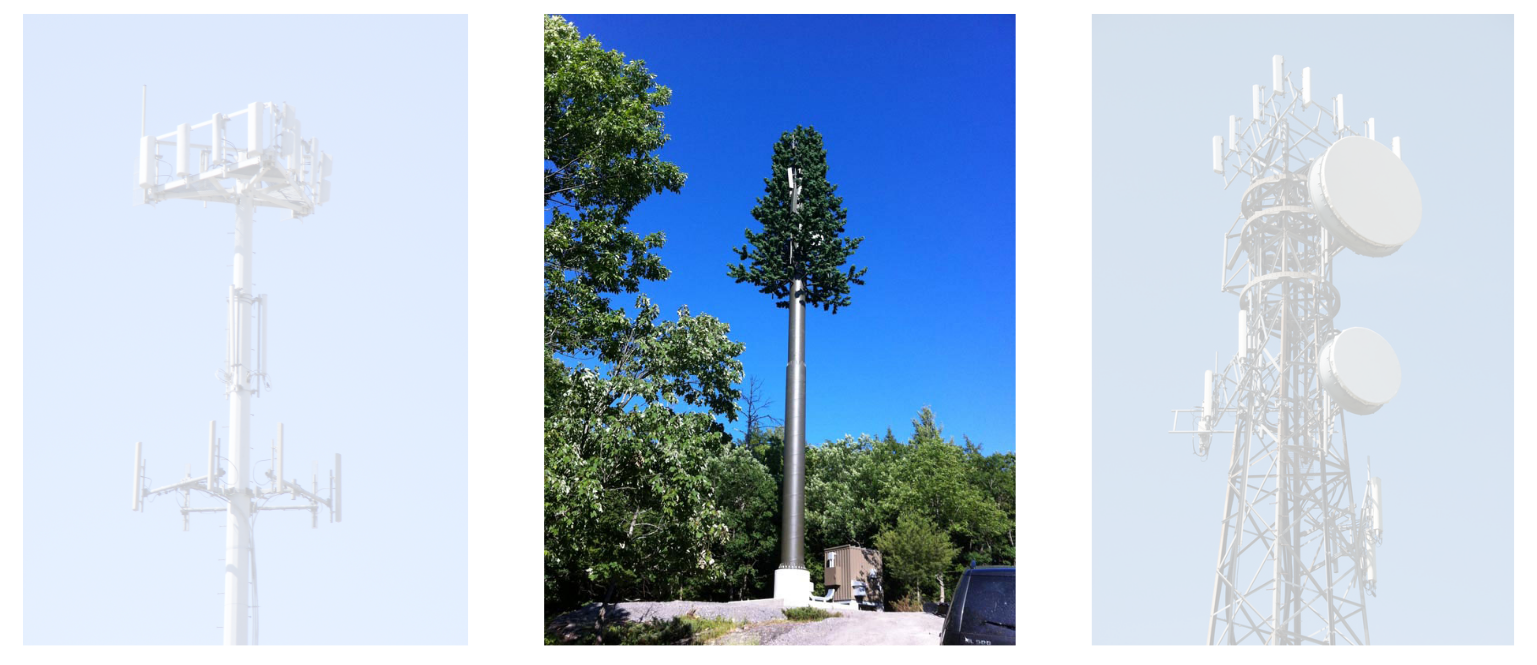
Where have we seen this before:
 Kitty or Pupper?
Kitty or Pupper?
Anyways, these macro cells tend to be really high; on rooftops or built above the treeline. This ensures that signals can reach them and no physical structures can block the signal and cause interference (e.g. trees, cars, buildings etc. )
2. Small cells. These are the same as macro cells ?but ?smaller. They?re helpful because it isn?t economically or socially viable to stick huge towers everywhere, so companies can expand coverage by using smaller cells that communicate back to the macro cell.
3. Back-haul. The ?communication from small cell back to the macro cell? is called back-haul. This is usually a fiber-optic cable that sends the signal collected from the small cell back to the macro cell for proper routing.
It helps to think about this in terms of Star Wars. The small cells = the tie fighters and the macro cell = the death star. The tie fighters can operate independently to do their job, but ultimately they always relay their mission?s information back to the death star:
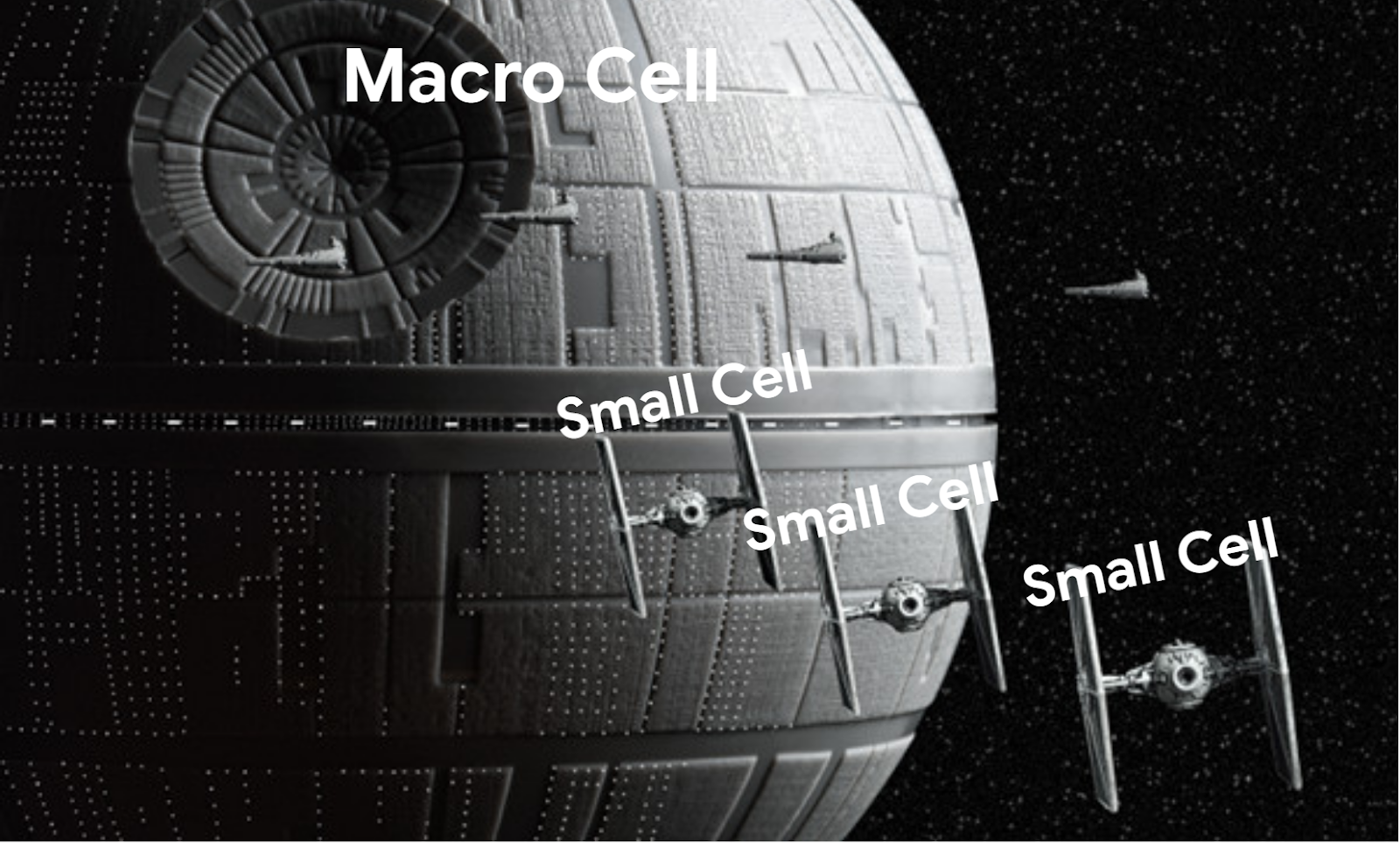 Original Image Source: Riovissi Stock Imagery 2017
Original Image Source: Riovissi Stock Imagery 2017
In more practical terms it looks something like this:
 Original Image Source: SNMP center 2018
Original Image Source: SNMP center 2018
The reason that you can drive 60 MPH in a car and not drop a call is because these small cells have gotten really good at handing your signal off to one another. So as you move from tower to tower your phone signal is never broken and is eventually ?back-hauled? to the macro cell.
This system works largely the same way that your phone works ? just bigger. There are receivers to accept signals from phones and transmitters to send signals to other phones. The amazing thing about these structures is the engineering that it takes to set them up in just the perfect position so that it can receive and transmit millions of signals in a given second without any interference.
The backbone of private infrastructure: WiFi
Good ol? WiFi.
While WiFi and Cellular data (aka Mobile Data) may help you accomplish the same tasks there are some key differences between them that impact how they operate. This section will focus on where WiFi and cellular data differ.
The difference is great enough that they need to be separated from one another in phone menus:
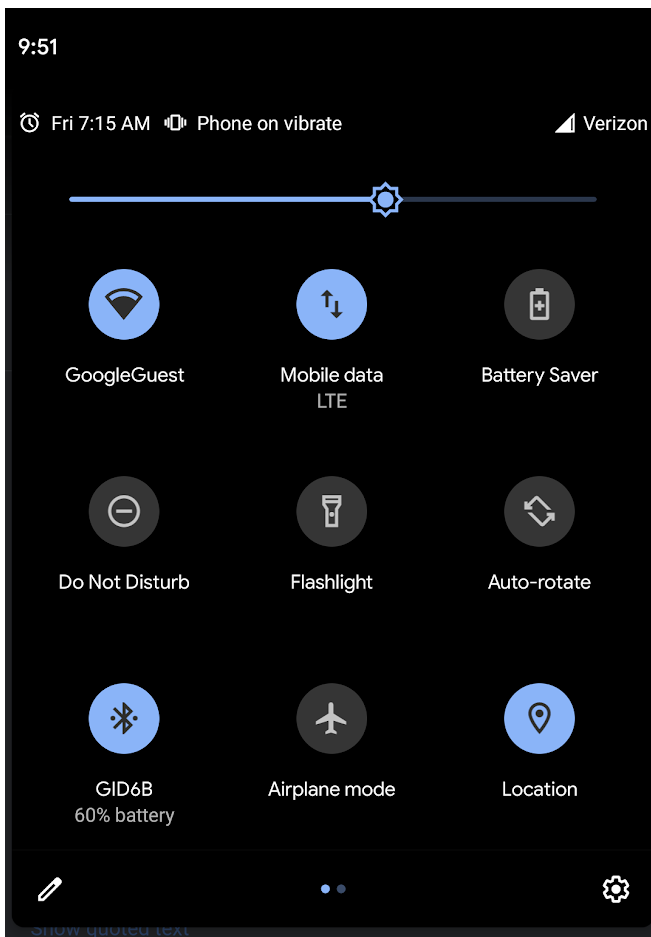
Similar to cellular data there is ?spectrum considerations? and hardware considerations. We?ll start with the spectrum.
WiFi Spectrum
The first difference is that WiFi does its thing at a different spot on the electromagnetic spectrum than cellular data:

WiFi is further to the right on the spectrum. That means that it is a higher frequency, lower wavelength, which means more bandwidth. This is why it?s faster to download a movie over WiFi than cellular data. It also means that the waves can?t travel as far. That?s why things like router placement and being close to the WiFi hardware is so important.
The most common two frequencies used for WiFi are 2.4 GHz and 5 GHz. These two bands were set aside for private WiFi networks, which means they are unlicensed spectrum.
This authorizes you to setup a network at home without contacting the FCC. That?s the upside. The downside is that there?s no governing body that controls for wave interference. If there are two WiFi networks next to one another operating at 2.4GHz it?s very likely that the waves are hitting each other and cancelling out. This is why your WiFi likely sucks if you?re living in a large apartment building with 10?s or 100?s of other tenants with WiFi networks above and below you.
Hardware
There are 3 main components to the hardware that runs your home network:
- Router. Routers and modems are very easily confused. For example a Router looks like this:
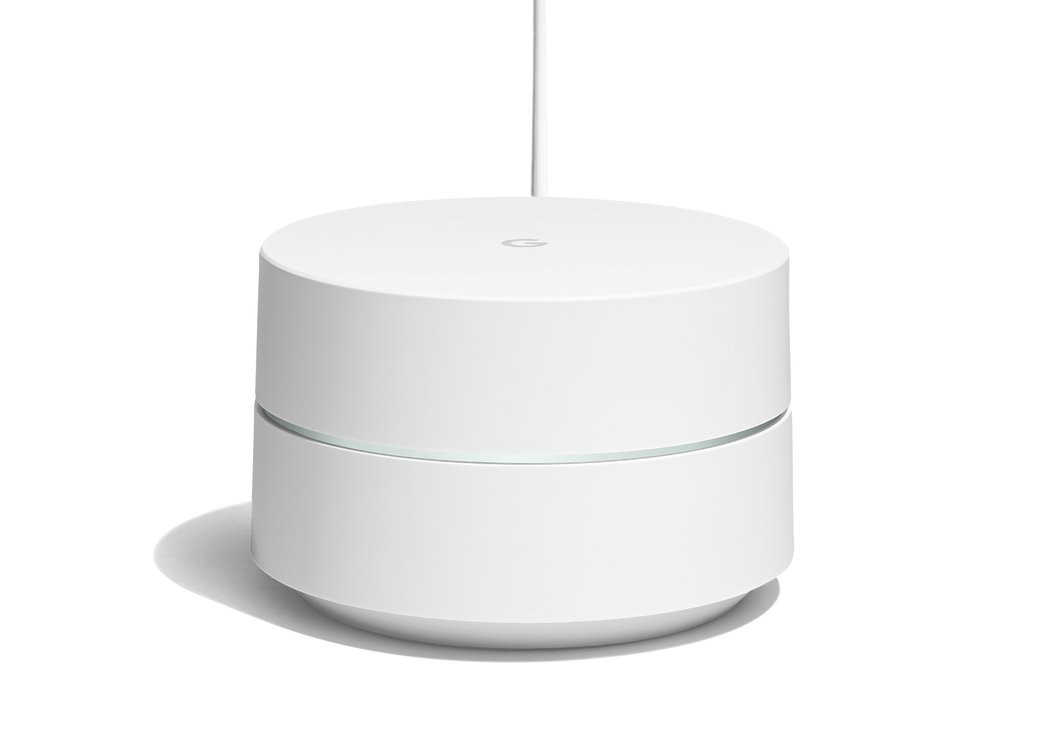 Google WiFi Router
Google WiFi Router
This is the piece of hardware that your devices actually connect to. The role of the router is to play traffic cop. A typical home may have 20+ devices sending and receiving signals (waves) to and from a router. The router organizes all of this so that the signal can successfully get from your device to the internet and back. If you think back to cellular data, the router acts as the FCC.
- Modem. A modem is the thing that you get from your cable company. It looks like this:
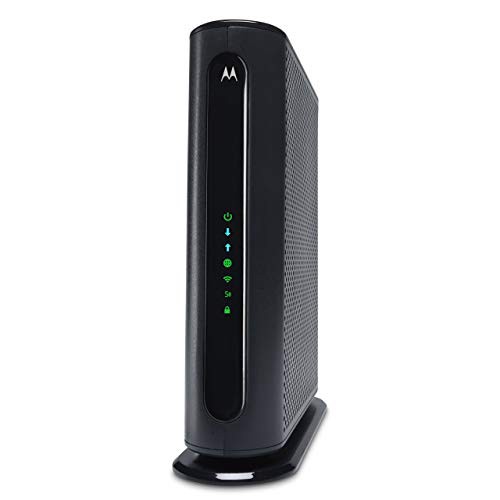 Motorola Modem
Motorola Modem
The goal of the modem is to connect the signal request from the router to the internet.
Typically, your modem will be connected to your router via an Ethernet cord. This connection transmits the electrical signal from device ? Router ? Modem. The modem is connected to a small cell outside your home or somewhere inside your building via Coaxial cable (same as fiber optic cable but slower and worse in every way). From that small cell the signal is relayed back to the macro site i.e. DeathStar.
So while in cellular data the waves are sent wireless-ly , in WiFi the electrical signals are sent via cable. This is why the cable company has to come to setup WiFi , they?re enabling the ?back-haul? from your unit to a small cell to a macro cell. All together it looks like this:

Oh and remember, those signals are getting sent back and forth at ~ 186,282 miles per second. Very cool.
The future of public and private infrastructure: 5G and CBRS
Up to this point we?ve covered how things work today. But now it?s time to enter the time machine and make speculative statements about how things will work.
5G i.e. 5th Generation Cellular Networks
Roughly every 10 years or so a new generation of wireless networks are rolled out. Right now we?re in the 4G LTE stage. The idea is that download speeds and overall efficiency should increase with each generation, like so:
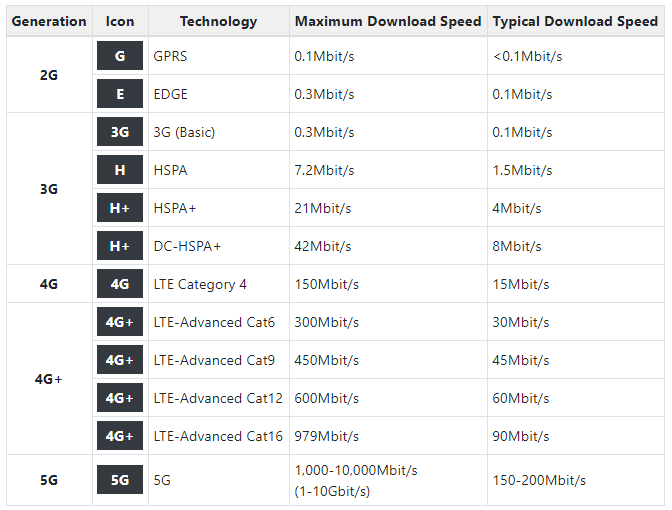 Source: Ken?s Tech Tips 2018, Validated on Wikipedia because ?Ken?s Tech Tips? didn?t sound all that reliable at first.
Source: Ken?s Tech Tips 2018, Validated on Wikipedia because ?Ken?s Tech Tips? didn?t sound all that reliable at first.
You can see that 5G promises much, much faster downloads speeds as well as increased bandwidth (not shown in the table above).
This is critical because of two facts:
- There?s a finite amount of data that can be processed at any given point on the spectrum (bandwidth).
- Americans are starting to use a f*ck ton of data. And it?s growing really fast.
 Source: Cisco, 2018 (Left). IP.Access Forecast (Right)
Source: Cisco, 2018 (Left). IP.Access Forecast (Right)
But to be able to send more data we need to move to the right on the electromagnetic spectrum to get more bandwidth.
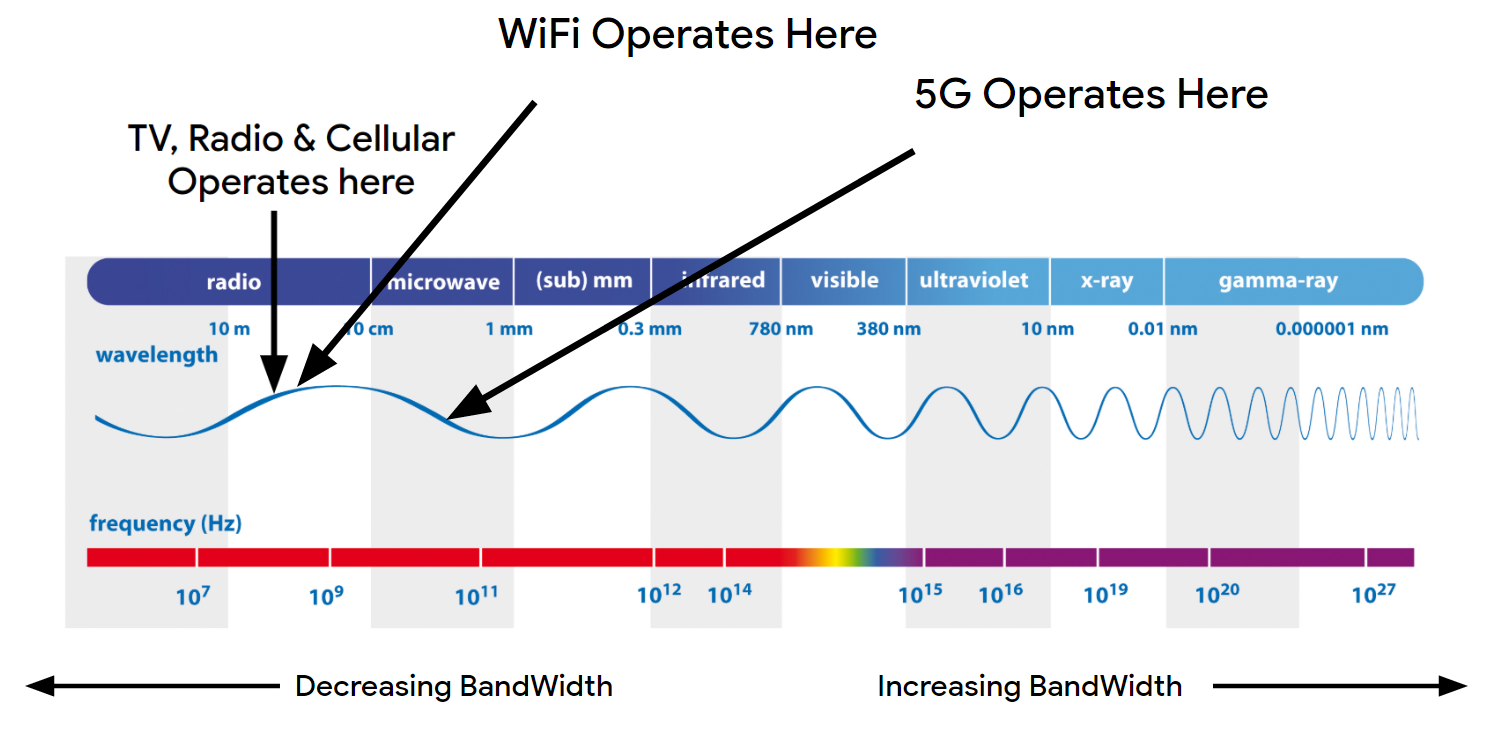
This chart from the CBRS alliance clarifies how ?far to the right? 5G is once you zoom into the radio wave portion of the spectrum:
 5G will provide high frequency, low wave length capacity. Source: CBRS Alliance 2018
5G will provide high frequency, low wave length capacity. Source: CBRS Alliance 2018
As you move to the right of the electromagnetic spectrum there are some implications to keep in mind:
- The wavelength gets smaller but the frequency gets larger. This means that you can send way more data way less far. One of the implications of this is very fast download speeds, but you also need to put 100x as many cell towers around so that the signal works. Conservative estimates put the cost to do this at ~$250B / carrier. And as you can imagine many communities don?t love the idea of having metal fake trees everywhere.
- If you move far enough to the right, the electromagnetic spectrum will mess you up. If the wavelength has a great enough frequency it can give you radiation poisoning, cancer or kill you. Chart below is helpful:
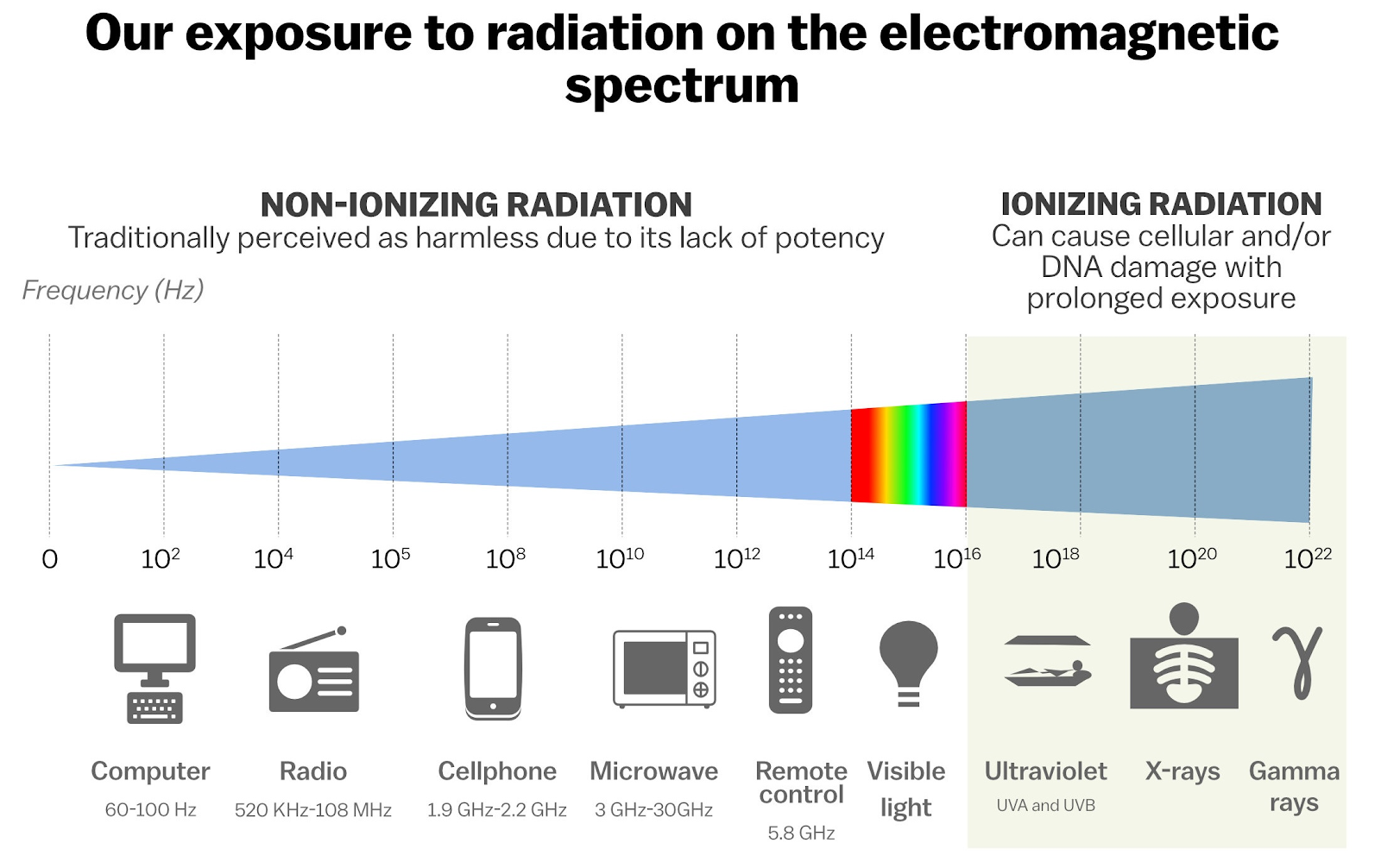 Source: ABC News, 2019
Source: ABC News, 2019
This isn?t to say that 5G will kill you, or even that it?s harmful. The truth is that people really don?t know. At what point on the spectrum does it become a public safety hazard? The FCC has said that 5G will be as dangerous as using a hair dryer. Alternatively, a group of scientists out of the UK claim 5G would be more harmful than direct contact with Asbestos?.
Clearly, the public is pretty split on this:
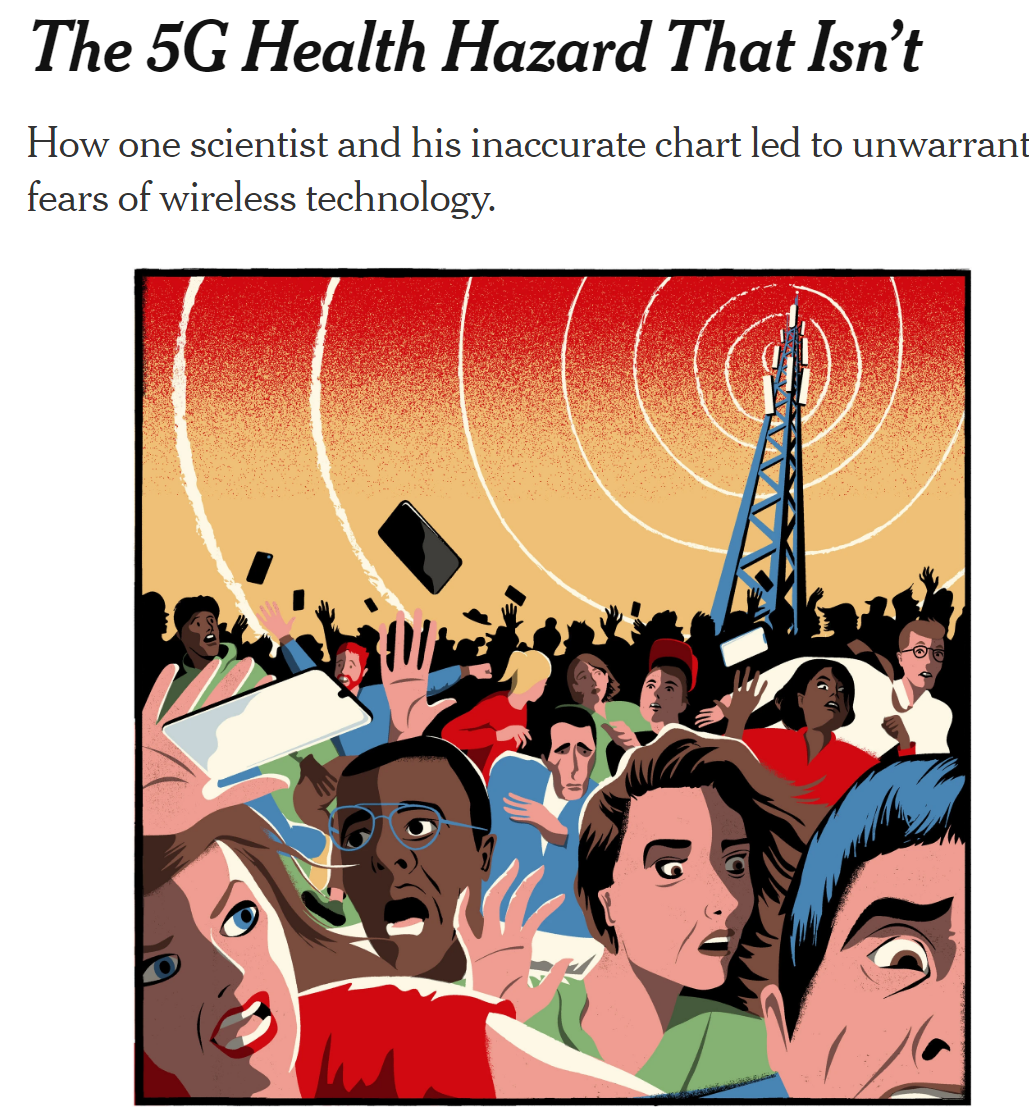 Source: The New York Times 2018
Source: The New York Times 2018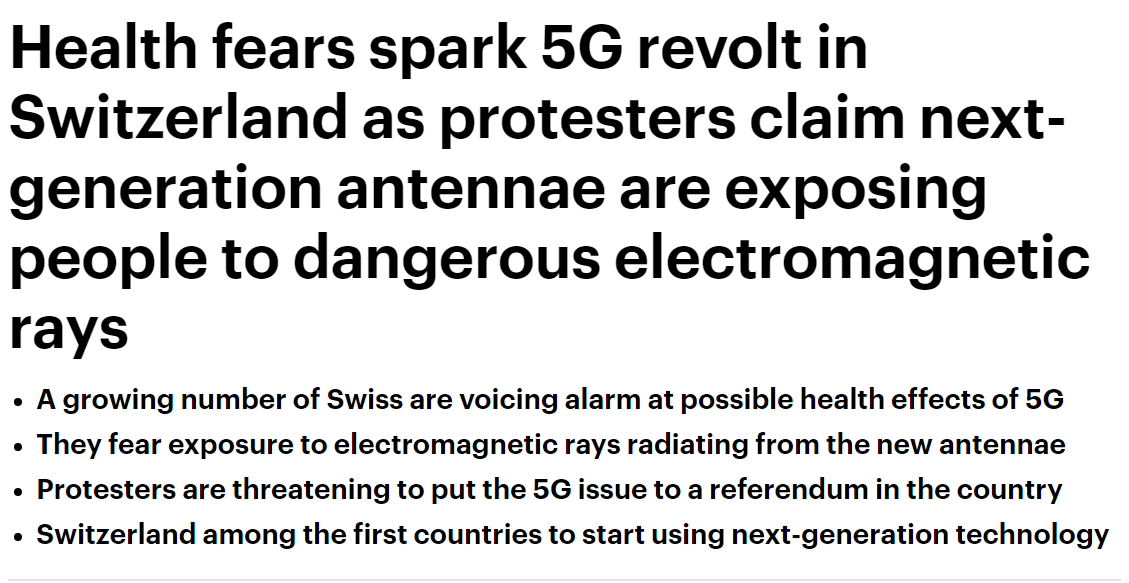 Source: The Daily Mail 2019
Source: The Daily Mail 2019
The jury is still out on where the truth lies, however it would be great to know before we 100x the amount of cell towers pumping these waves through us for the rest of eternity.
CBRS ? Citizens Broadband Radio Service
The introduction of Citizens Broadband Radio Service, or CBRS, has the potential to vastly change the telecommunications industry.
At it?s core, CBRS is a new, more open way to think about spectrum. It changes the dual party relationship of FCC to MNO (e.g. Sprint, Verizon) and allows anyone to join in the spectrum buying fun.
This new system takes a band of spectrum and breaks it into three tiers:
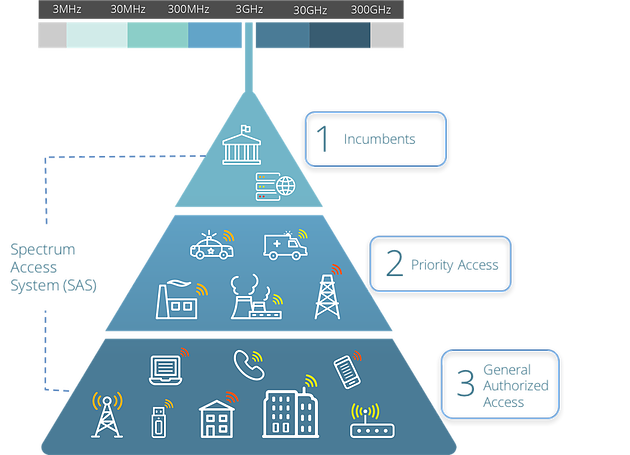 Source: CBRS Alliance 2019
Source: CBRS Alliance 2019
Tier 1: Incumbents. This tier is reserved for the government. No one else can or will be able to use it. Generally this spectrum is how the Army / Navy communicate so it?s off limits. It will also serve some government owned satellite communication.
Tier 2: Priority Access. This is where the existing MNO?s (Verizon & TMobile/Sprint) will operate. They will still have priority access to any spectrum which they wish to buy from the FCC. However there is one major change: if they aren?t using the spectrum they bought, it falls into tier 3 and automatically becomes available to anyone.
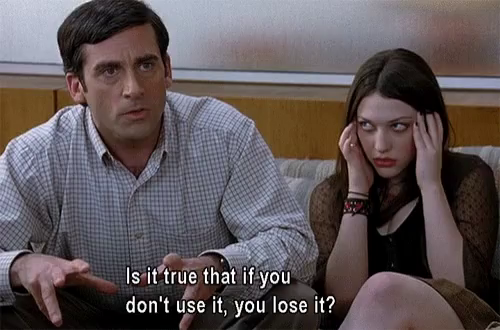
This is a major change because it protects companies from hoarding spectrum to control the market.
Tier 3: General Authorized Access. Anyone can use this spectrum. This means that you could create your own mobile network if you?d like. The hope is that opening this tier up to the market will spur innovation in the form of new business models, technology and competition. One such business model that is expected to gain popularity is the ?neutral host? model.
Today?s model is MNO centric. That means that the MNO owns the spectrum and sells it to customers. The neutral host model flips that on its head.
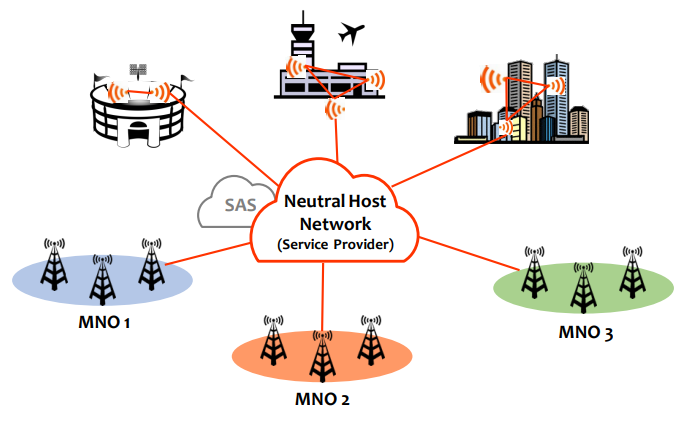 CBRS enabling a neutral host model for cellular coverage. Source: Mobile Experts 2017
CBRS enabling a neutral host model for cellular coverage. Source: Mobile Experts 2017
In the neutral host model anyone can own a network. Then they can sell access to that network to any MNO (Verizon, Sprint etc), venue (Madison Square garden), airport or end user. Neutral host opens the telecommunications industry up to anyone who wants to get involved. This could become critical to the roll out of 5G, where there?s a need to increase infrastructure by 100x. If the creation of the infrastructure is ?crowd-sourced? it?s completion feels more realistic.
This is just one of the business models that CBRS makes possible. It?s worth paying close attention to see who takes advantage of this opportunity and ?disrupts? the one industry that?s been immune for as long as it?s been around.
Footnotes
[1]: https://www.statista.com/statistics/222307/forecast-of-mobile-phone-penetration-in-the-us/
[2]: There?s an entire field called radio wave propagation that is in charge of making sure this doesn?t happen.
[3]: https://en.wikipedia.org/wiki/Spectrum_auction#United_States
[4]: Technically U.S. Cellular is the 5th, but given their Subscriber base >5M they were excluded.
[5]: https://variety.com/2018/digital/news/smartphone-addiction-study-check-phones-52-times-daily-1203028454/
[6]: Not all hardware would be a cell tower. This gets really complicated as there are base stations, small cells, large cells, distributed antenna systems (DAS). For brevity?s sake, cell tower = some equipment that is receiving and transmitting signals.
[7]: http://pongcase.com/blog/cell-phones-work/
[8]: https://www.permaculture.co.uk/news/scientists-appeal-5g-wireless-hazardous-asbestos
